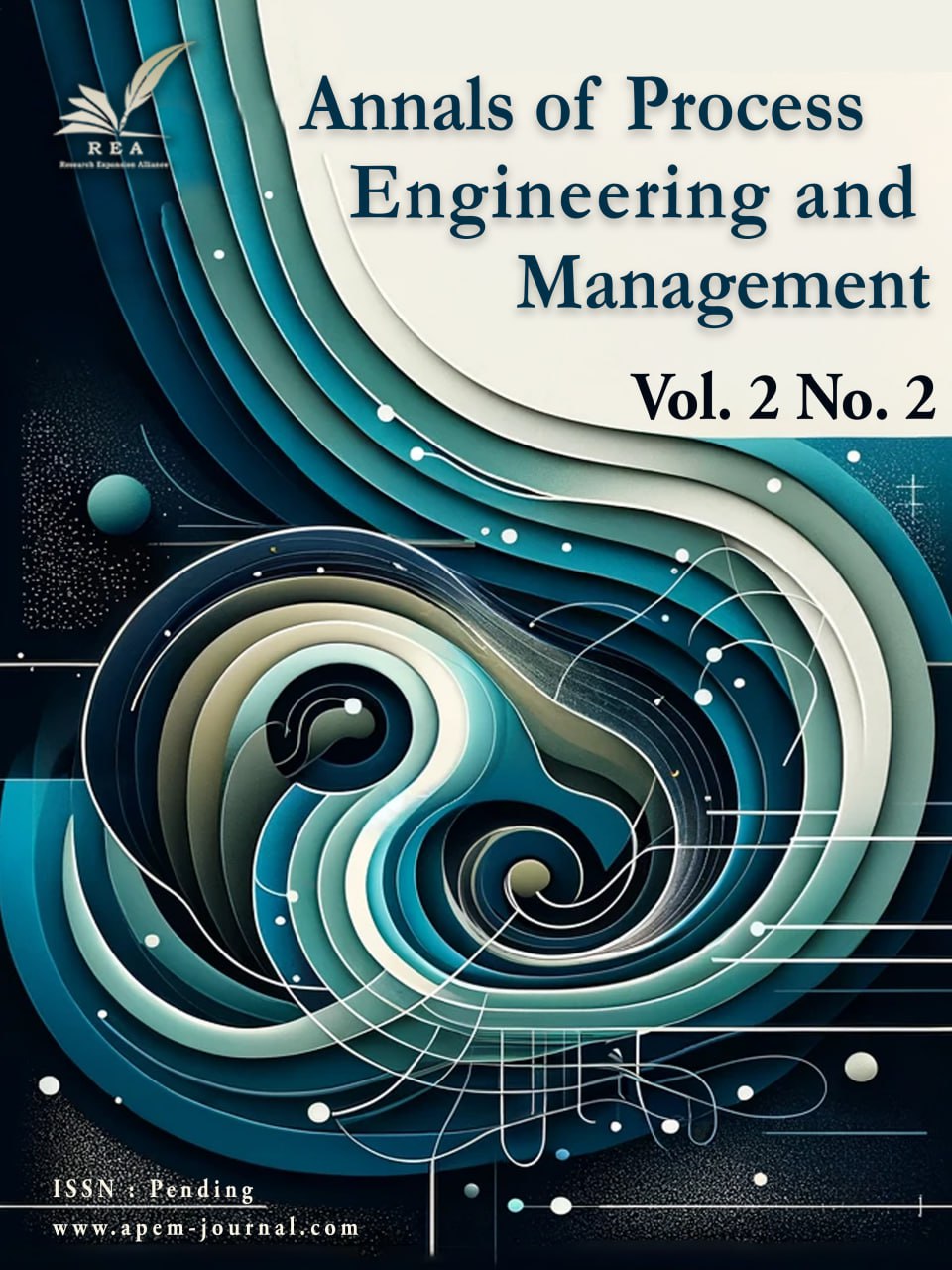A Fast Internet of Things DDoS Attack Detection Method Using Deep Feedforward Networks
Abstract
The increasing use of Internet of Things (IoT) devices has led to a surge in data traffic, which can be vulnerable to intentional denial-of-service (DoS) attacks that disrupt the intended Quality of Service (QoS). This paper presents a deep learning-based approach using Feedforward Neural Networks (FNNs) to detect Distributed Denial-of-Service (DDoS) attacks in IoT networks. We evaluated the performance of this approach on the IoT-23 dataset, which included captures of both malware-infected and benign IoT traffic. We conducted a comparative analysis between the FNN approach and three commonly used Machine Learning (ML) models, namely, Support Vector Machines (SVM), Random Forests (RFs), and Gradient Boosting (GRB). Our findings demonstrate that all methods achieve similar levels of accuracy. However, the FNN model distinguishes itself with significantly higher precision than the other models. Furthermore, our analysis revealed that FNN exhibits the shortest learning time among the considered models.
Keywords:
Internet of things, Traffic classification, Supervised learning, Distributed denial-of-service attack, Internet of things-23References
- [1] Zafar, S., Jangsher, S., Bouachir, O., Aloqaily, M., & Othman, J. Ben. (2019). QoS enhancement with deep learning-based interference prediction in mobile IoT. Computer communications, 148, 86–97. https://doi.org/10.1016/j.comcom.2019.09.010
- [2] Vishwakarma, R., & Jain, A. K. (2020). A survey of DDoS attacking techniques and defence mechanisms in the IoT network. Telecommunication systems, 73(1), 3–25. https://doi.org/10.1007/s11235-019-00599-z
- [3] Alzahrani, R. J., & Alzahrani, A. (2021). Survey of traffic classification solution in IoT networks. International journal of computer applications, 183(9), 37–45. https://doi.org/10.5120/ijca2021921392
- [4] Tahaei, H., Afifi, F., Asemi, A., Zaki, F., & Anuar, N. B. (2020). The rise of traffic classification in IoT networks: A survey. Journal of network and computer applications, 154, 102538. https://doi.org/10.1016/j.jnca.2020.102538
- [5] Finsterbusch, M., Richter, C., Rocha, E., Muller, J. A., & Hanssgen, K. (2014). A survey of payload-based traffic classification approaches. IEEE communications surveys & tutorials, 16(2), 1135–1156. https://doi.org/10.1109/SURV.2013.100613.00161
- [6] Al Khater, N., & Overill, R. E. (2015). Network traffic classification techniques and challenges. 2015 tenth international conference on digital information management (ICDIM) (pp. 43–48). IEEE. https://doi.org/10.1109/ICDIM.2015.7381869
- [7] Shahid, M. R., Blanc, G., Zhang, Z., & Debar, H. (2018). IoT devices recognition through network traffic analysis. 2018 IEEE international conference on big data (Big data) (pp. 5187–5192). IEEE. https://doi.org/10.1109/BigData.2018.8622243
- [8] Moore, A., Zuev, D., & Crogan, M. (2005). Discriminators for use in flow-based classification. https://www.researchgate.net/publication/243787961
- [9] Lopez-Martin, M., Carro, B., Sanchez-Esguevillas, A., & Lloret, J. (2017). Network traffic classifier with convolutional and recurrent neural networks for Internet of Things. IEEE access, 5, 18042–18050. https://doi.org/10.1109/ACCESS.2017.2747560
- [10] Azab, A., Khasawneh, M., Alrabaee, S., Choo, K.-K. R., & Sarsour, M. (2022). Network traffic classification: Techniques, datasets, and challenges. Digital communications and networks, 10(3), 676–692. https://doi.org/10.1016/j.dcan.2022.09.009
- [11] Qi, Y., Xu, L., Yang, B., Xue, Y., & Li, J. (2009). Packet classification algorithms: From theory to practice. IEEE INFOCOM 2009 (pp. 648–656). IEEE. https://doi.org/10.1109/INFCOM.2009.5061972
- [12] Shafiq, M., Yu, X., Laghari, A. A., Yao, L., Karn, N. K., & Abdessamia, F. (2016). Network traffic classification techniques and comparative analysis using machine learning algorithms. 2016 2nd IEEE international conference on computer and communications (ICCC) (pp. 2451–2455). IEEE. https://doi.org/10.1109/CompComm.2016.7925139
- [13] Khedkar, S. P., & AroulCanessane, R. (2020). Machine learning model for classification of IoT network traffic. 2020 fourth international conference on I-SMAC (IoT in social, mobile, analytics and cloud)(I-SMAC) (pp. 166–170). IEEE. https://doi.org/10.1109/I-SMAC49090.2020.9243468
- [14] Santos, M. R. P., Andrade, R. M. C., Gomes, D. G., & Callado, A. C. (2018). An efficient approach for device identification and traffic classification in IoT ecosystems. 2018 IEEE symposium on computers and communications (ISCC) (pp. 304–309). IEEE. https://doi.org/10.1109/ISCC.2018.8538630
- [15] Bikmukhamedov, R. F., & Nadeev, A. F. (2019). Lightweight machine learning classifiers of iot traffic flows. 2019 systems of signal synchronization, generating and processing in telecommunications (SYNCHROINFO) (pp. 1–5). IEEE. https://doi.org/10.1109/SYNCHROINFO.2019.8814156
- [16] Kumar, R., Swarnkar, M., Singal, G., & Kumar, N. (2021). IoT network traffic classification using machine learning algorithms: An experimental analysis. IEEE internet of things journal, 9(2), 989–1008. https://doi.org/10.1109/JIOT.2021.3121517
- [17] Shaaban, A. R., Abd-Elwanis, E., & Hussein, M. (2019). DDoS attack detection and classification via convolutional neural network (CNN). 2019 ninth international conference on intelligent computing and information systems (ICICIS) (pp. 233–238). IEEE. https://doi.org/10.1109/ICICIS46948.2019.9014826
- [18] Stoian, N. A. (2020). Machine learning for anomaly detection in iot networks: Malware analysis on the iot-23 data set. [Thesis]. https://B2n.ir/fm4029
- [19] Yuan, X., Li, C., & Li, X. (2017). Deepdefense: Identifying DDoS attack via deep learning. 2017 IEEE international conference on smart computing (smartcomp) (pp. 1–8). IEEE. https://doi.org/10.1109/SMARTCOMP.2017.7946998
- [20] Aswad, F. M., Ahmed, A. M. S., Alhammadi, N. A. M., Khalaf, B. A., & Mostafa, S. A. (2023). Deep learning in distributed denial-of-service attacks detection method for Internet of Things networks. Journal of intelligent systems, 32(1), 20220155. https://doi.org/10.1515/jisys-2022-0155
- [21] Upadhyay, Y. (2019). Introduction to feedforward neural networks. Towards data science, 7.
- [22] Garcia, S., Parmisano, A., & Erquiaga, M. J. (2020). IoT-23: A labeled dataset with malicious and benign IoT network traffic. http://doi.org/10.5281/zenodo.4743746
- [23] Sunasra, M. (2017). Performance metrics for classification problems in machine learning. https://medium.com/@MohammedS/performance-metrics-for-classification-problems-in-machine-learning-part-i-b085d432082b
- [24] Jia, Y., Zhong, F., Alrawais, A., Gong, B., & Cheng, X. (2020). Flowguard: An intelligent edge defense mechanism against IoT DDoS attacks. IEEE internet of things journal, 7(10), 9552–9562. https://doi.org/10.1109/JIOT.2020.2993782
- [25] Azab, A., Layton, R., Alazab, M., & Oliver, J. (2014). Mining malware to detect variants. 2014 fifth cybercrime and trustworthy computing conference (pp. 44–53). IEEE. https://doi.org/10.1109/CTC.2014.11
- [26] Vieira, S., Garcia-Dias, R., & Pinaya, W. H. L. (2020). A step-by-step tutorial on how to build a machine learning model. In Machine learning (pp. 343–370). Elsevier. https://doi.org/10.1016/B978-0-12-815739-8.00019-5


